The energy reversal frame, as a design tested on various international courts, has proven its merits and has been applied across both the initial N7 generation and the mid-generation Energy series. It seems there’s not much untapped potential left. If I remember correctly, the Energy 80 is currently the latest product in Li Ning’s Energy series, and I’m curious how they’ve managed to fine-tune this mature platform into an excellent piece of equipment.

Specifications: 4UG5, weight of the bare racket is 82g, balance point is 308mm, shaft length is 210mm, medium stiffness leaning towards stiff, full wind-breaking frame, 10-2 o’clock string grooves, warranty for up to 32 lbs, strung at 25-26 lbs with VBS66N strings.
Compared to the Energy 75C, which was brought into the spotlight by Loh Kean Yew for some time, the Energy 80 endorsed by Zhang Nan has always had a more stable market reaction, until the release of the Fengying 800. After watching the unboxing review by a senior reviewer, he highly praised the quality control of this model, and combining that with Li Ning’s reputation for excellent craftsmanship, I trust that the Energy 80 is reliable in terms of quality as a product.
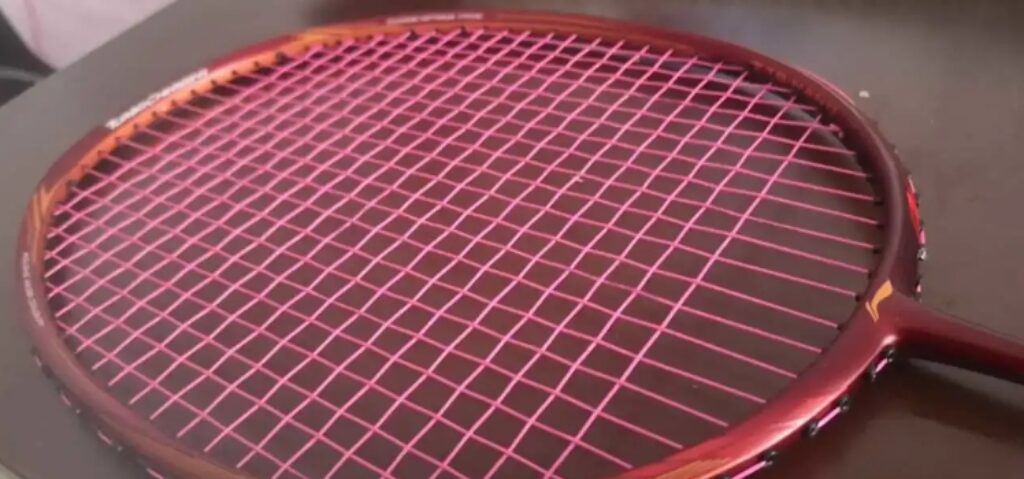
The Energy 80 only comes in one color and one specification. The entire racket is a very bright red—so bright it appears golden. This alone is likely to attract many players, such as the owner of this racket. In fact, Li Ning has continued to use their youthful design language across the entire Energy series, and even with such a vibrant color, the details stand out upon closer inspection. Although I’ve previously used the N72, this is the first time I’ve deliberately examined the wind-breaking frame design in this series: starting from the T-joint, the lower triangle wind-breaking frame extends outwards, naturally forming an inward trapezoidal wind-breaking frame at the racket head, giving it a distinctive look. The frame is thicker compared to speed series products from the Green and Blue brands, likely designed for better torsion resistance and frame rigidity.
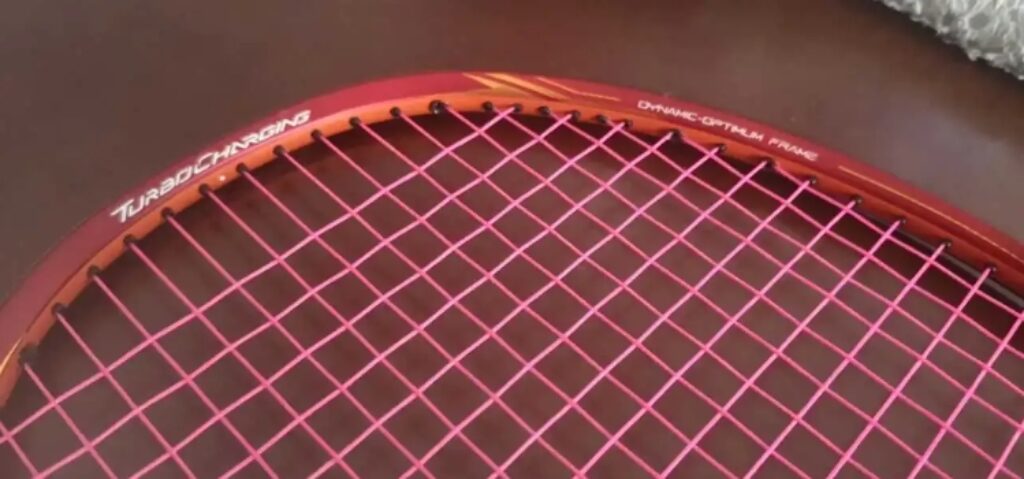
I was quite surprised when I first handled the Energy 80, given that it’s one of the flagship models in the series—it’s unexpectedly friendly. It still retains the fast swing speed, large sweet spot, high tolerance, and smooth driving feel of the N72. Of course, after some retuning, the shaft feels stiffer, but the higher balance point makes the ease of use when hitting the ball even more noticeable. Surprisingly, the increased swing weight doesn’t negatively impact swing speed as much as expected. This tuning makes it very reliable when dealing with passive situations in the backhand and overhead areas.
I’ve previously seen comments criticizing the usability of this racket, but I didn’t expect the Energy 80 to be so easy to handle—it’s a piece of equipment that players with a bit of a foundation can use comfortably. Moreover, the drift present in the N72 has been significantly improved in the Energy 80, with a noticeably stronger and more stable downward pressure.
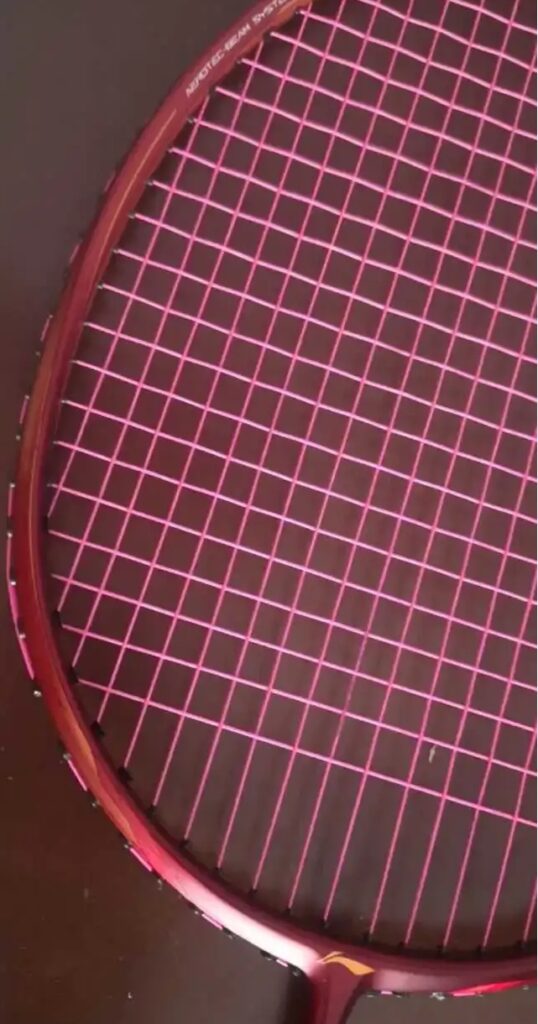
Not only is the downward pressure improved, but the shaft’s performance is also visibly enhanced, and with the higher swing weight, the Energy 80’s power smashes exceeded my expectations again. Although the driving feel is good, during more focused bursts of power, the shaft’s deformation suddenly feels stiffer, aiding in the release of explosive power. This greatly suppresses the unloading sensation compared to the N72. I even felt that this was somewhat reminiscent of the same shaft used in the Fengdong 9000. The ball speed performance during power smashes with the Energy 80 is quite impressive, and it’s clear that opponents find it difficult to defend against. The racket’s shot style isn’t particularly crisp, since the frame is larger and the horizontal string tension decays more noticeably, creating a slight holding sensation when the strings are fully activated. This is similar to the N72, and players who prefer a crisp and springy feel might not find it as appealing.
However, the increased holding sensation and enlarged sweet spot provide an advantage in net control. I feel that I can directly apply the same judgment used for the N72—not only does it excel at net intercepts and spins, but it also gives great confidence and forgiveness in backcourt cuts and drops, making it easy to adapt to the feeling of cutting around the shuttlecock.
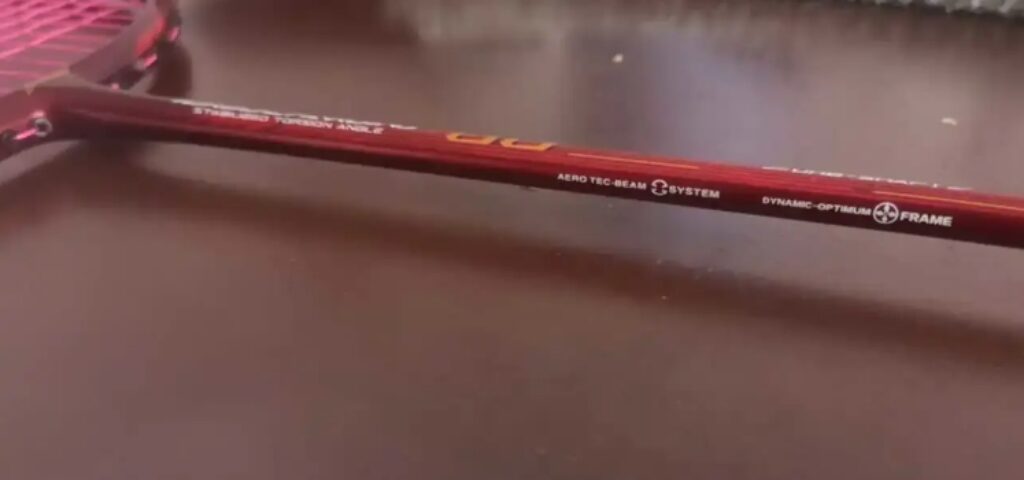
In fast-paced offense-defense exchanges, the racket might not feel as nimble during defense or flat drives due to its head-heavy nature, but the shaft’s recovery speed has improved a lot compared to older Li Ning models. After each shot, the racket doesn’t feel wobbly when transitioning into a ready position. While it may not immediately turn the tide when under pressure, once the tempo picks up, the Energy 80 holds its own even in intense exchanges. Furthermore, its stability and directional accuracy, based on its excellent torsion resistance, give it a slight edge.
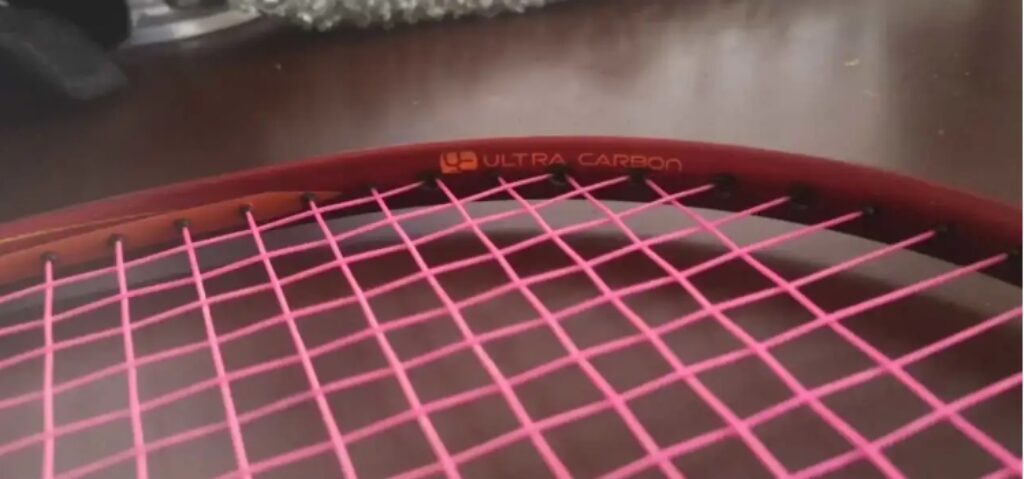
Overall, as someone not deeply familiar with the Energy series, after testing the Energy 80, I found many of the N72’s advantages carried over. In addition, the adjustments to the balance point and shaft have made incremental (rather than revolutionary) improvements, resulting in a well-rounded speed attack racket. It manages to maintain a balance between singles and doubles suitability while keeping the difficulty level in check, but make no mistake, this “sweet racket” has a very high ceiling.

Leave a Reply